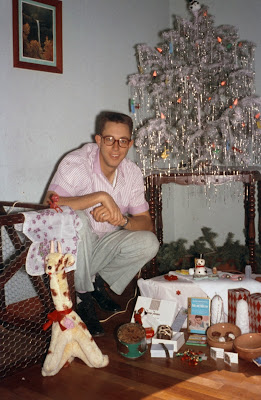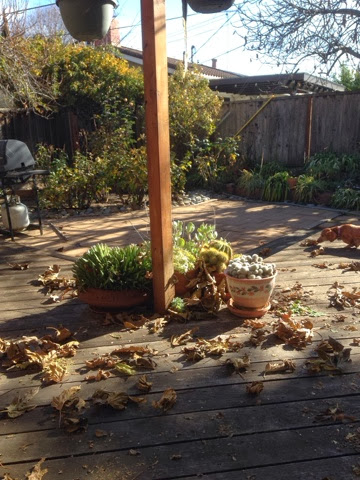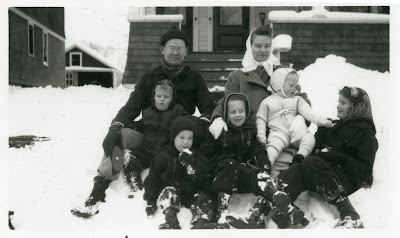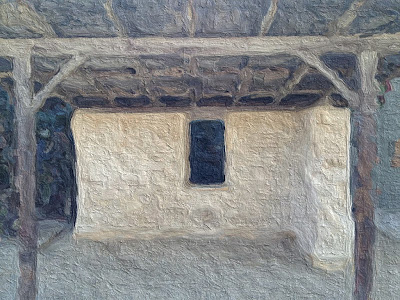
On the way to pick up our surgically enhanced dogs (see previous post) I got to look at the beautiful winter skies and iPhoneCam this through the windshield. I love that time of day when the light has not quite gone and the sky seems enormous and valuable. Living now in the prosperous Boise area of Idaho I am very far away from the Ireland of the mid-Fifties as visited through the translated prose of Heinrich Boll. I hope readers of this blog will understand that I haven't figured out how to get the diacriticals from other languages here. A pair of dots is suppoed to be above the o in his name.
It has been almost 60 years since the visit to Ireland memorialized in his Irish Journal, translated by Leila Veenwitz. I wanted to pick a passage to share with you (I had marked quite a few!) but finally chose this one from pages 84 and 85.
"The old man is eighty-eight; a contemporary of Sun Yat-Sen and Busoni, he was born before Rumania became what it has for years no longer been: a kingdom; he was four years old when Dickens died--and he is a year older than dynamite; all this merely to catch him in the frail net of time. The ruin he was sitting in front of had been a barn built in the beginning of our century, but fifty feet farther on there was a ruin from the sixth century; fourteen hundred years ago St. Ciaran of Clonmacnois built a church here. Without the discerning eye of the archeologist, the walls from the twentieth century are indistinguishable from those of the sixth century; there is a shade of green over them all, scattered with golden patches of sunlight.
It was here that George wanted to try out a new color film, and the old man--one year older than dynamite--had been chosen to supply the "human interest": puffing away at his pipe, he was to be filmed on the bank of the Shannon against the setting sun, a few days later he would appear on American screens, and all the Irish in America would have tears of home-sickness in their eyes and begin to sing; multiplied a million times over, shrouded in veils of green light, in the rosy glow of the setting sun, and the smoke from his pipe blue, intensely blue--that was how he was to appear.
But first tea had to be drunk, lots of tea, and the visitors had to pay tribute by telling all the news; for in spite of radio and newspapers, news from the lips of the man you shook hands with, the man you had tea with, that's the kind that counts. We had tea in the lounge of a vacant manor house; the permanent dark-green shadow of the trees seemed to have dyed the walls green, to have drawn a green patina over the Dickensian furniture. The retired English colonel who had brought us over in his boat---with his long red hair, his pointed red beard, he looked like a mixture between Robinson Crusoe and Mephistopheles---led the conversation, and unfortunately I found it hard to understand his English---although he was kind enough to try and speak "slowly, very slowly."
At first I understood only three words in the conversation; Rommel, war and fair, and I knew that Rommel's "fairness" during the "war" was one of the colonel's favorite topics; moreover, my attention was distracted by the old man's children, grandchildren, great-grandchildren, who looked into the room, or brought tea, hot water, bread, and cakes (a little five-year-old girl came with half a cookie and placed it on the table as a token of her hospitality), and all of them, children, grandchildren, great-grandchildren had the pointed, triangular, heart-shaped face that so often looks down on the busy world in the form of a waterspout from the towers of French cathedrals . . . .
George sat holding the camera, ready to shoot and waiting for the sunset, but that evening the sun was slow in setting, particularly slow it seemed to me, and the colonel switched from his favorite topic to another: he talked about someone called Henry who had evidently been a hero in the war in Russia; from time to time the old man looked at me in wondering surprise with his round pale-blue eyes, and I would nod; who was I to deny this Henry, whom I did not know, the heroism with which Crusoe-Mephistopheles credited him?
At last the sun seemed ready to set; as required by the director, it was approaching the horizon, approaching the television devotees in America, and we walked slowly back to the bank of the Shannon. The sun was dropping fast now, and the old man quickly filled his pipe, then drew on it too hastily so that it was no longer puffing by the time the lower edge of the sun was just touching the horizon. But the old man's tobacco pouch was empty, and the sun was slipping away rapidly. How dead a smokeless pipe looks in the mouth of a peasant standing in front of the setting sun: folkloric silhouette, silver hair in the green light, rosy-hued brow. George hurriedly tore up a few cigarettes and stuffed them into the pipe bowl, pale-blue smoke came puffing out, and at this very moment the sun was half-submerged behind the gray horizon: a eucharist in dwindling glory---the pipe puffed, the camera whirred, and the silver hair shone: greetings from the beloved homeland for moist Irish eyes in America, a new type of picture postcard. "We'll dub in a nice bagpipe tune," said George.
Folklore is something like innocence: when you know you have it, you no longer have it, and the old man stood there rather sadly when the sun had gone down; a blue-gray twilight absorbed the green veils. We went over to him, tore up some more cigarettes and stuffed them in his pipe; suddenly it was cool, dampness flowed in from all sides, and this island, this tiny kingdom where the old man's family had lived for three hundred years, the island seemed to me like a great green sponge lying half in, half out of the water and soaking up dampness from below."
The beauties of this prose, the progress and human richness of the thought are worth re-reading with careful attention. I have been particularly struck by the use of colons and semi-colons in sequence. I love the way the green threads its was through this passage. I hadn't meant to quote so much! But am now glad I did!
Sleep well!










































